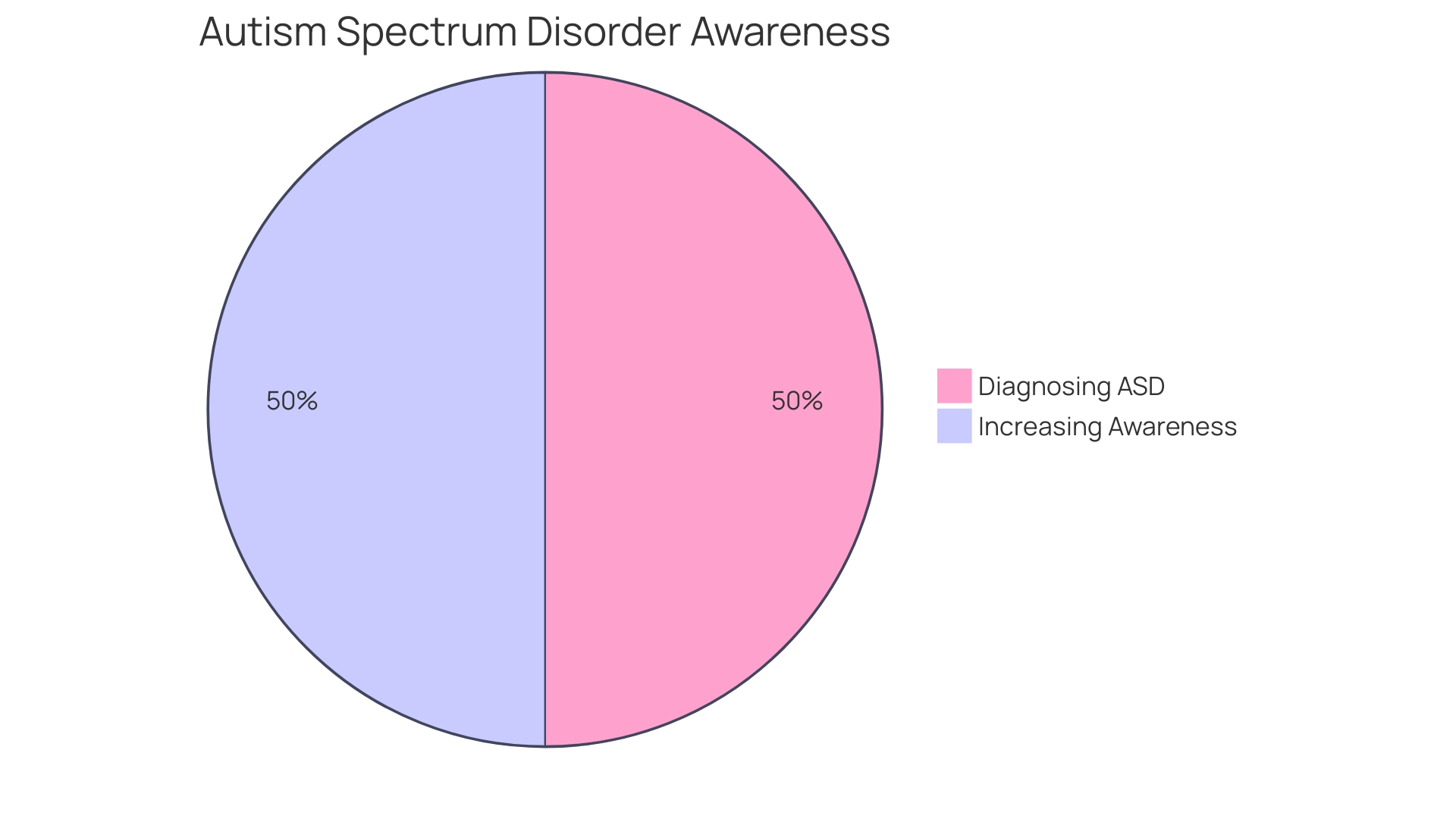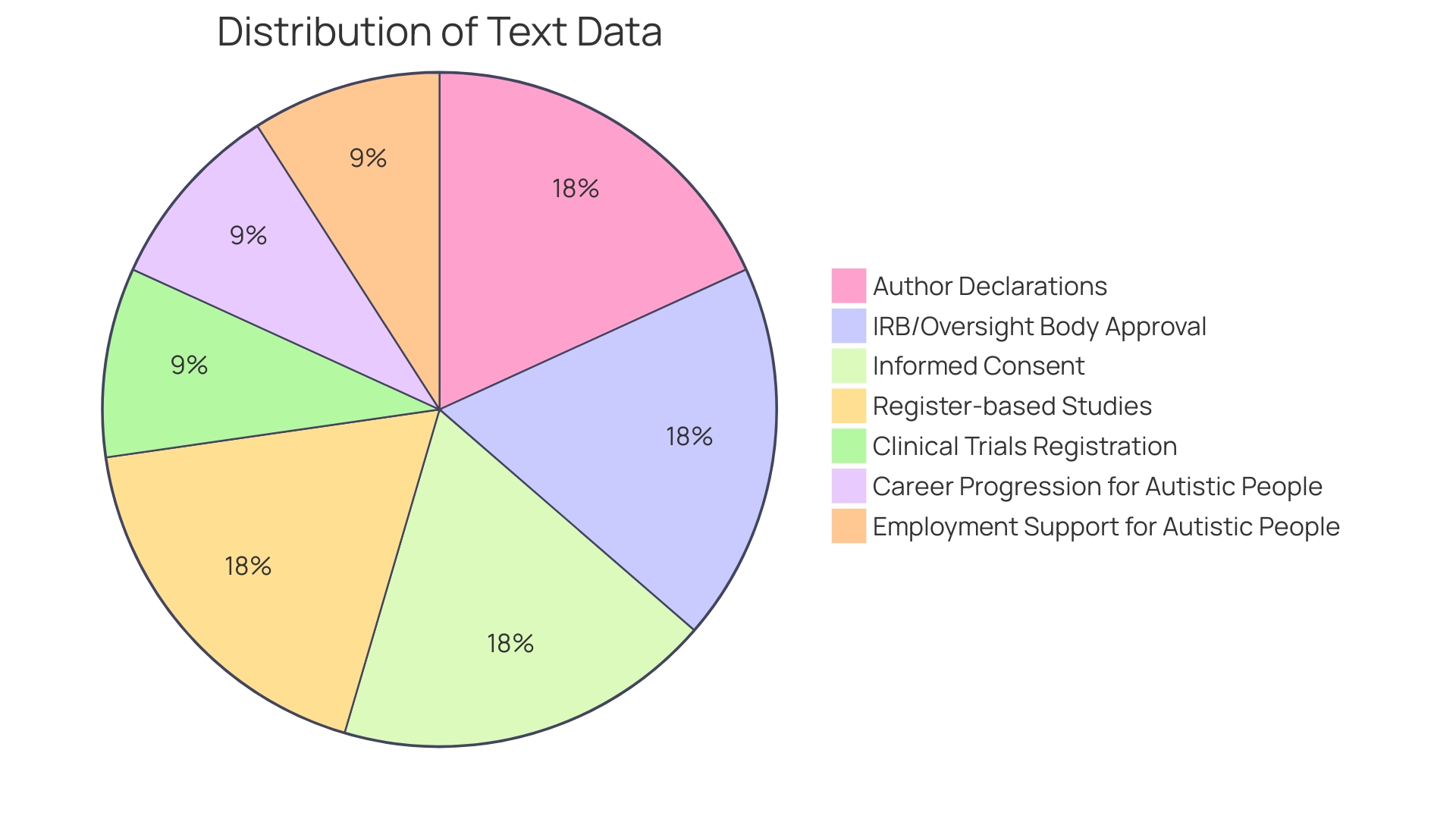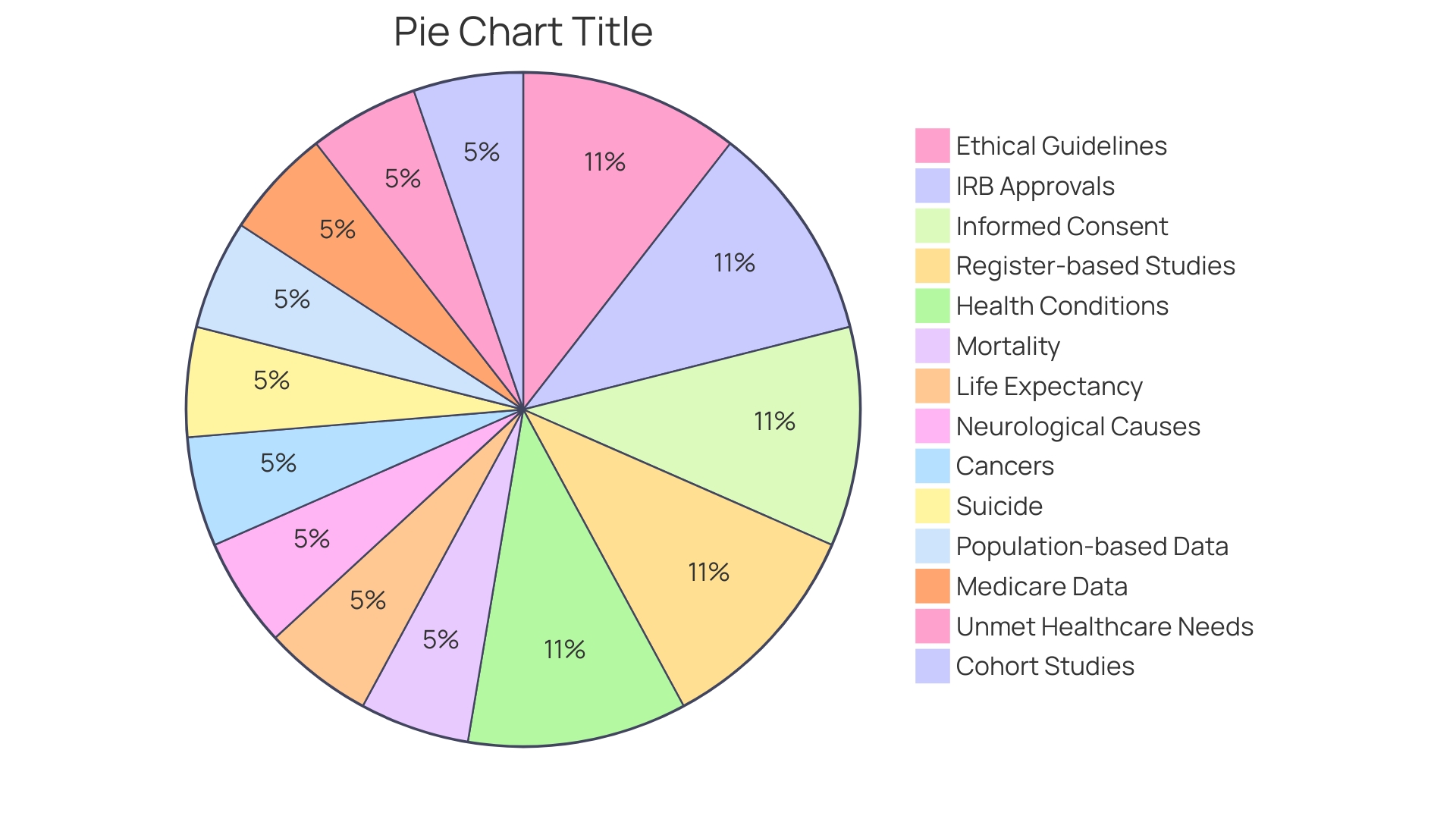Introduction
Autism Spectrum Disorder (ASD) is a complex neurodevelopmental condition that affects approximately 1 in 36 individuals, according to the Centers for Disease Control and Prevention (CDC). It is characterized by a spectrum of behaviors and social communication challenges, making each person's experience unique. From differences in communication and social interactions to intense interests and sensory sensitivities, ASD requires a personalized approach to meet the needs of individuals.
While the exact causes of ASD remain elusive, research indicates that brain structure and genetics play significant roles. Early diagnosis is crucial as it opens doors to vital resources and support that can significantly improve quality of life. In this article, we will explore the definition, complexity, prevalence, characteristics, diagnosis, impact, related conditions, and strategies for supporting individuals with Autism Spectrum Disorder.
By understanding and empowering Parent Advocates, we aim to provide guidance and resources to navigate challenges and ensure the well-being of their children.
Definition of Autism Spectrum Disorder
Autism Spectrum Disorder (ASD) is more than just a medical diagnosis; it's a unique way of experiencing the world. This complex neurodevelopmental condition is marked by a spectrum of behaviors and social communication challenges that are as diverse as the individuals themselves. Affecting approximately 1 in 36 individuals, according to the Centers for Disease Control and Prevention (CDC), ASD manifests in myriad forms, necessitating a personalized approach to each person's needs.
Key characteristics of ASD include persistent differences in communication, social interactions, and relationships across various environments. For example, individuals might display echolalia, the repetition of sounds or phrases, or engage in repetitive movements. They may also show a strong preference for sameness, struggle with changes in routine, or demonstrate intense interests that are highly specific and focused.
Sensory sensitivity is another hallmark of ASD, with individuals often experiencing an atypical response to sensory stimuli, which can range from extreme sensitivity to significantly lower sensitivity.
While the exact causes of ASD remain elusive, it is acknowledged that differences in brain structure or function play a role. Brain scans of individuals with ASD often reveal variations in brain shape and structure compared to neurotypical development. Despite misconceptions, it's important to clarify that ASD is not caused by vaccines, parenting styles, or nutrition.
Instead, genetics and heredity are considered significant factors, with patterns of autism or related disabilities frequently observed within families.
Early diagnosis is crucial as it opens the door to vital resources and support that can significantly improve quality of life. It's underscored by the Diagnostic and Statistical Manual of Mental Disorders (DSM-5), which clinicians utilize to identify and diagnose ASD. Moreover, recent advancements, such as the application of artificial intelligence for early diagnosis and the development of innovative brain organoid models, hold promise for further understanding and supporting individuals with ASD.
Complexity of Autism Spectrum Disorder
Autism Spectrum Disorder (ASD) is a complex condition with no single known cause. It's characterized by a spectrum of behaviors that affect social skills, communication, and behavior, with symptoms appearing in early childhood and continuing throughout life. The American Psychiatric Association’s Diagnostic and Statistical Manual (DSM-5) outlines criteria for diagnosis, including persistent differences in communication and social interaction across various environments, as well as restricted and repetitive behavior patterns.
Some behaviors may include repeating sounds or phrases, a preference for sameness, and intense interests or sensitivities to sensory input.
The prevalence of ASD is notable, with the CDC estimating that it occurs in as many as 1 in 36 individuals. While the root causes are still under investigation, researchers have identified a combination of genetic predisposition and environmental factors as potential contributors. Brain scans of individuals with ASD show variations in brain structure compared to neurotypical development, suggesting that neurological differences play a role.
Importantly, misconceptions about the causes of autism, such as links to vaccines, parenting styles, or nutrition, have been debunked. Instead, patterns within families suggest a genetic component to the disorder. Despite the challenges in pinpointing a singular cause, early diagnosis is crucial as it allows individuals to access resources and support that can significantly improve their quality of life.
Awareness and understanding of ASD are increasing, with a focus on embracing neurodiversity and recognizing that each individual's experience on the spectrum is unique.
Prevalence of Autism Spectrum Disorder
Autism Spectrum Disorder (ASD) is more prevalent than many realize, with recent findings by the Centers for Disease Control and Prevention indicating that around 1 in 36 individuals may be on the autism spectrum. The concept of neurodiversity is gaining traction, recognizing that neurodivergent individuals—those with neurological differences such as autism—experience and interact with the world uniquely. ASD is a complex condition, characterized by a spectrum of behaviors that manifest in diverse ways and intensities, from social communication difficulties to repetitive behaviors and sensory sensitivities.
In light of this, the definition of ASD has evolved. It is now understood as a spectrum condition, with a wide range of expressions, leading to a shift in both scientific and societal perspectives. Raising awareness and understanding of autism has contributed to better diagnostic methods and increased detection rates.
However, it remains unclear whether the rise in autism diagnoses is solely due to heightened awareness and improved diagnostics or if other factors are at play.
Recent educational statistics reflect this increase, showing a significant uptick in the number of students with disabilities identified as having ASD. The U.S. Department of Education reports that nearly 13% of such students had an autism diagnosis during the 2022-2023 school year, more than double the rate from 2008-2009. This rise underscores the importance of early screening and diagnosis, which can lead to early intervention and support, enhancing the quality of life for those on the spectrum.
Researchers are continuously exploring the causes of autism, examining genetic and environmental factors, while dispelling myths such as the debunked link between vaccines and autism. Understanding that autism is not the result of parenting style or nutritional choices, but rather differences in brain structure or function is crucial. Identifying autism early on can empower individuals with autism and their families with resources to navigate life with confidence and fulfillment.

Characteristics of Autism Spectrum Disorder
Autism Spectrum Disorder (ASD) encompasses a range of conditions that present challenges in social skills, nonverbal communication, and the establishment of relationships. Individuals with ASD might struggle to interpret and respond to social cues, making conversations and social interactions complex for them. This is further illustrated by an inclination towards repetitive behaviors, such as specific routines or rituals, and a deep, sometimes overwhelming, interest in particular subjects.
Sensory sensitivities, like an aversion to certain textures or sounds, are also common, affecting day-to-day experiences.
Research underscores that autistic individuals, despite these challenges, can engage in and benefit from social learning and interaction similarly to their neurotypical peers. These findings are vital as we shift towards a more digital world, where online education plays a significant role. Ensuring that autistic adults have access to social contexts that support their learning is crucial, especially in light of the increased reliance on digital platforms for education following the Covid-19 pandemic.
A recent study by The Center for Discovery in New York, which serves individuals with developmental disabilities, including ASD, has been pivotal in using AI to analyze extensive datasets. The aim is to predict significant behavioral patterns in autistic individuals, with the goal of mitigating the impact of those behaviors. This study is a testament to the potential of combining clinical expertise with technology to advance support and resource allocation for individuals on the autism spectrum.
Autism is indeed a spectrum, with diverse manifestations and a prevalence as high as 1 in 36 individuals, according to the CDC. Understanding the intricacies of ASD is essential for providing the appropriate resources and support to those affected. While the exact causes of autism remain under investigation, it is acknowledged that variations in brain structure and function play a role, debunking misconceptions such as links to parenting styles or vaccinations.

Diagnosis of Autism Spectrum Disorder
The identification of Autism Spectrum Disorder (ASD) is critical for accessing the necessary resources and support to enable those affected to thrive. This process involves a multidisciplinary approach where pediatricians, psychologists, and speech and language therapists collaborate to provide a thorough assessment. During the evaluation, the child's developmental history is meticulously reviewed, behaviors and social interactions are observed, and standardized assessment tools are employed.
The American Psychiatric Association’s Diagnostic and Statistical Manual (DSM-5) serves as a vital reference for professionals in diagnosing ASD, outlining specific behaviors such as persistent challenges in communication and social interaction as well as restricted, repetitive patterns of behavior or interests.
With the prevalence of autism reported to be as high as 1 in 36 individuals, early and accurate diagnosis is paramount. It opens doors to interventions that can significantly enhance the quality of life for individuals with ASD and their families. Misconceptions regarding the causes of autism have been dispelled, with current research focusing on brain structure and function differences, genetic links, and heredity rather than erroneous factors such as vaccines or parenting styles.
Despite the advancements in diagnostic tools and understanding, significant disparities in healthcare access persist. Children from minority, low-income, and rural backgrounds often face delayed diagnosis compared to their peers, leading to a disadvantage in receiving early intervention. Innovations such as objective biomarker-based tools are being explored to reduce these disparities and ensure that all children, regardless of their background, can benefit from early diagnosis and the subsequent support that can transform their lives.
Impact of Autism Spectrum Disorder
Autism Spectrum Disorder (ASD) encompasses a range of conditions presenting in diverse ways across the lifespan, from childhood through adulthood. It primarily manifests in differences in social communication and interaction, as well as restricted and repetitive behaviors. For individuals with ASD, these core characteristics can pose significant challenges in everyday life, affecting relationships, educational attainment, and daily functioning.
In-depth research highlights that autistic individuals can experience varying levels of social communication difficulties, leading to a greater risk of isolation and depression, especially during the vulnerable adolescent years. Studies, like those published in Molecular Autism, have shed light on the complexities of social interaction and the profound impact it can have on mood and well-being.
Statistics reveal that autism is more common than previously thought, with current estimates indicating that as many as 1 in 36 children are diagnosed with ASD. This underscores the importance of recognizing the condition early on to provide the necessary support and interventions. Adults, too, are affected, with around 1 in 45 diagnosed with ASD in the United States alone.
Many of these adults may have lived without a diagnosis for years, facing life's challenges without understanding the root cause of their social and communication difficulties.
For parents and caregivers, understanding ASD is crucial in advocating for and supporting their loved ones. The journey doesn't end with childhood; it is a lifelong process that requires ongoing support. Mental health and employment services are often utilized by autistic adults, according to studies tracking service use.
Access to appropriate mental health counseling, in particular, is linked to more active participation in the community and full-time employment.
Autism doesn't just affect the individual; it extends to the family and the broader community. Friends, teachers, co-workers, and others may not fully grasp how ASD influences behavior and communication, making awareness and education key components in fostering a supportive environment for those on the spectrum. With a growing body of research and advocacy, the aim is to not only increase understanding but also to enhance the quality of life for individuals with ASD and their families.
Related Conditions and Comorbidities
Autism Spectrum Disorder (ASD) is a complex neurodevelopmental condition marked by a spectrum of symptoms and abilities. It is recognized by challenges in social interaction, repetitive behaviors, and particular strengths or difficulties in sensory processing. Interestingly, ASD is not indicative of intellectual disabilities, as commonly misunderstood.
In fact, only about half of individuals with autism have a concurrent intellectual disability. Furthermore, ASD is intertwined with multiple genetic factors, contributing to its diverse manifestations.
Individuals with ASD might also experience other co-occurring conditions, such as Attention-Deficit/Hyperactivity Disorder (ADHD), anxiety disorders, and sensory processing issues. Social media and clinical observations have given rise to terms like "ADHD" or "AutiADHD" to describe the coexistence of autism and ADHD, highlighting the unique needs stemming from this overlap. While autism is often associated with a preference for consistent routines, ADHD can bring a desire for spontaneity, illustrating how contrasting traits can coexist in the same individual.
It's essential to address these co-occurring conditions to provide tailored support for those with ASD. As research progresses, it's becoming apparent that individuals with autism are at an increased risk for various physical and mental health issues, and this can unfortunately lead to a reduced life expectancy. The intersectionality of ASD with other health conditions underscores the importance of comprehensive healthcare and informed support systems.

Strategies for Supporting Individuals with Autism Spectrum Disorder
Supporting individuals with Autism Spectrum Disorder (ASD) requires a multifaceted approach that is as unique as the individuals themselves. Early intervention programs are pivotal, offering the chance for significant developmental improvements. Applied Behavior Analysis (ABA) is one such therapy that uses positive reinforcement to encourage helpful behaviors and reduce those that may cause harm or limit learning.
Speech and language therapy can unlock new ways for children with ASD to express themselves, while social skills training helps them navigate the complexities of interpersonal interactions.
Educational support should be tailored to each child's learning style; for instance, the Treatment and Education of Autistic and Related Communication-handicapped Children (TEACCH) approach emphasizes visual learning and structured environments to enhance the educational experience for children with ASD. Recognizing that every child has a unique set of strengths and interests is key to developing an effective individualized learning plan. This strengths-based approach shines a light on their talents, turning potential into progress.
It’s crucial for parents and caregivers to stay informed about treatment options, understanding both the benefits and risks of interventions. Continuous learning about new findings and therapies is a part of this process. However, as noted by experts, it's equally important to critically evaluate the quality and impact of intervention research to ensure that the strategies employed respect and support individuals with autism effectively.
Ultimately, the goal is to foster an inclusive environment that allows children with ASD to thrive in every aspect of their lives, from school to home to leisure activities. This holistic support is a testament to the equity and well-being we strive for, ensuring that each child's 'race' in life is as fair and full of opportunity as possible.
Conclusion
In conclusion, Autism Spectrum Disorder (ASD) is a complex condition that affects approximately 1 in 36 individuals. It is characterized by diverse behaviors and social communication challenges, with brain structure and genetics playing significant roles in its development.
Early diagnosis is crucial as it opens doors to vital resources and support that can significantly improve the quality of life for individuals with ASD. By embracing the concept of neurodiversity and understanding the unique needs of each individual, we can provide the appropriate resources and support to help them thrive.
Raising awareness and educating others about ASD is essential in creating a supportive environment that recognizes and accommodates the challenges faced by individuals with ASD. It is important to provide early intervention programs, such as Applied Behavior Analysis (ABA) and speech and language therapy, to improve developmental outcomes.
Individualized educational support that recognizes the strengths and interests of individuals with ASD is crucial. By addressing related conditions and comorbidities, such as ADHD and anxiety disorders, we can provide tailored support to meet their unique needs.
Supporting individuals with ASD requires a multifaceted approach that involves comprehensive healthcare and informed support systems. By understanding and empowering Parent Advocates, we can provide guidance and resources to navigate challenges and ensure the well-being of their children with ASD.
Together, we can create an inclusive environment that allows individuals with ASD to thrive in every aspect of their lives. By recognizing and embracing their strengths, we can enhance their quality of life and ensure that each child's 'race' in life is as fair and full of opportunity as possible.




